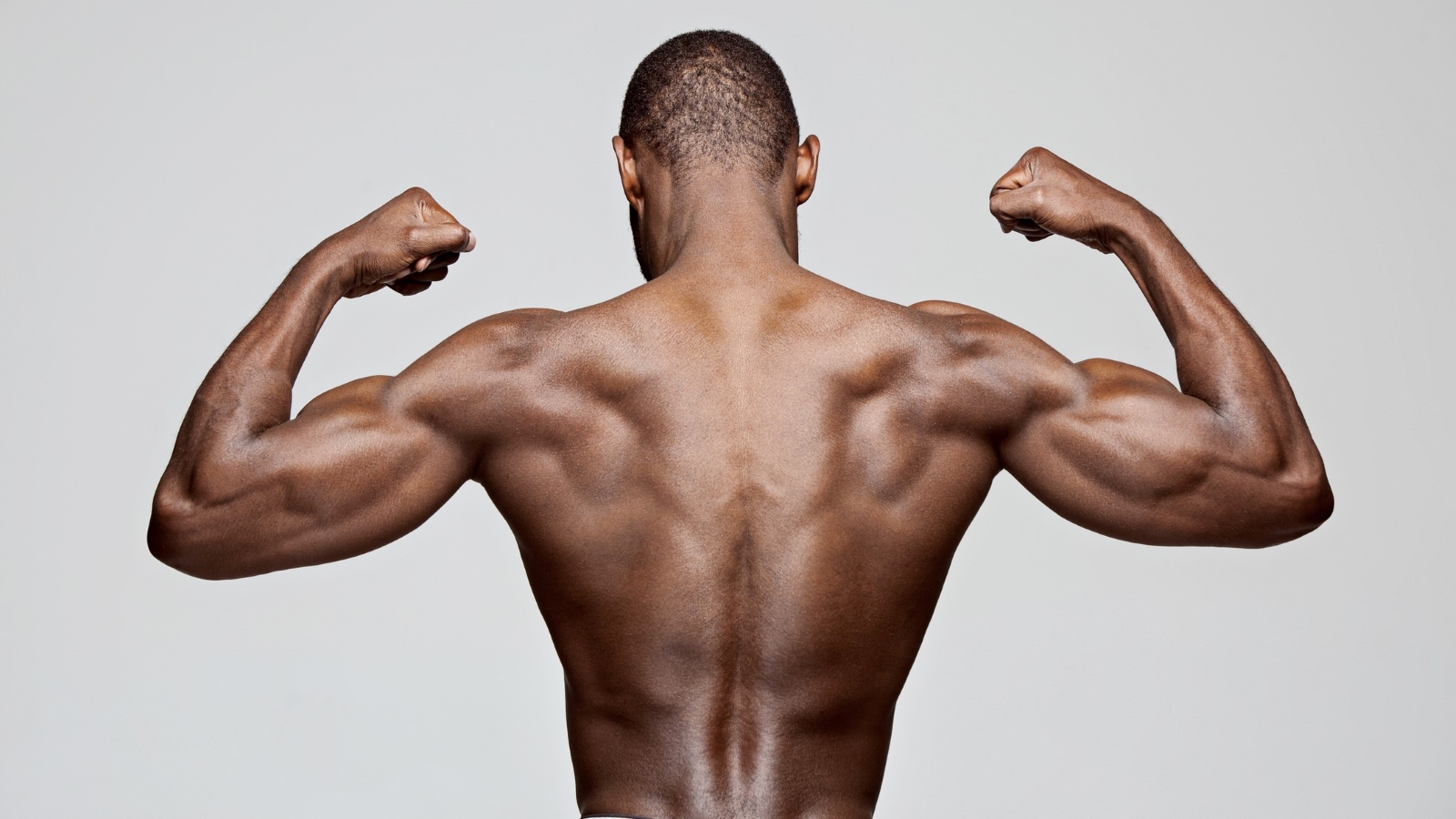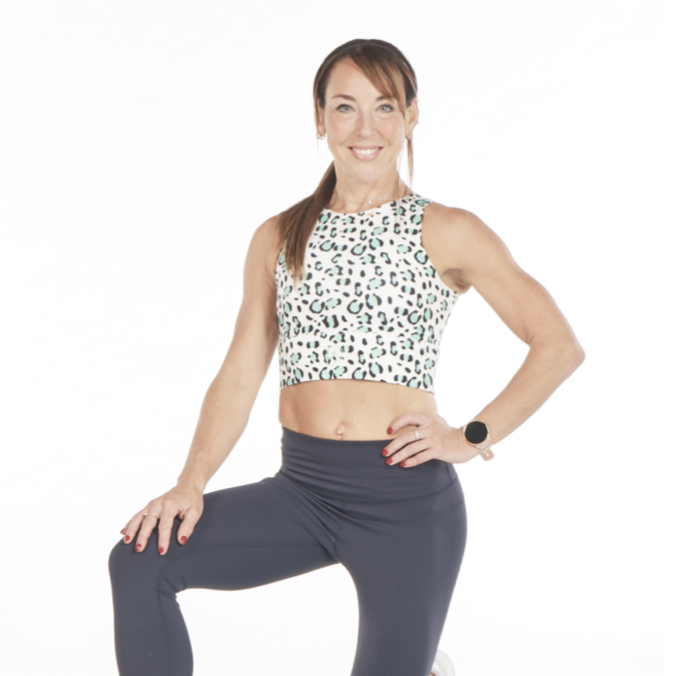

If you’ve ever been looked up and down and questioned why you can’t do a pull-up, then you're not alone. You train hard. You eat well. You look the part - but you can’t do a single pull-up?
The key is to not beat yourself up - Pull-ups are a super-challenging exercise. “Pull-ups require grip strength and upper body strength, particularly in the lats, rhomboids, biceps, and forearms," explains Sean Murphy, Chief Personal Training Officer at Ultimate Performance.
"They also require a technique that sees you pull your body up towards the bar until it is at chest level and then lower your body all the way down and back to hanging. It’s not easy, and many gym-goers, particularly those new to resistance training, have a love/hate relationship with the pull-up.”
The good news is that despite its tough reputation, mastering the same strength from a pull-up is very achievable. You don’t need a gym to get this strength, and best of all, you don’t need a pull-up bar.
The five dumbbell exercises below will help you to build a strong, muscular upper back, as well as give you the power and strength to pull off the perfect pull-up when you need to.
Bent Over Dumbbell Row
Reps: 15
Sets: 3
Sign up to the T3 newsletter for smarter living straight to your inbox
Get all the latest news, reviews, deals and buying guides on gorgeous tech, home and active products from the T3 experts
Why should you do it
This compound movement will hit the entire upper back. It will also work the shoulders, arms and forearms - all very similar muscle groups that get worked when doing pull-ups.
How to do it
Stand with your legs slightly bent, with your chest leaning forward at approximately a 45-degree angle. Keep your back flat, with your arms hanging down and a dumbbell in each hand. Keeping your core tight, pull the dumbbells towards your chest, keeping your elbows as close to the body as possible. Squeeze your shoulder blades together at the top of the movement, and then return your arms to the start position, exhaling as you lower the weight.
Top Tip
“Don’t allow your shoulders to round. Keep your shoulders back and your chest up for a better contraction of the lats,” explains Sean.
Renegade Row
Reps: 12 (each side)
Sets: 3
Why should you do it
The renegade row involves rowing the weight up towards the hips while pushing the shoulder blade into the centre of the back. It’s a great core and stability exercise that also hits the entire back.
How to do it
Start in a strong press-up position with a pair of dumbbells directly under your shoulders and your feet hip-width apart. Tighten your midsection and squeeze your glutes tight before slowly bringing one dumbbell towards the chest at the same side of the body.
Once at the top, pause for a second, trying to keep the whole body completely still. Reverse the movement until your hand is back on the floor. Repeat with the other hand.
Top Tip
“The goal is to minimise any movement of the hips – be it up and down or sideways - but if keeping your hips still feels too challenging, then widen your foot position and then progress in time by bringing your feet closer together.”
Wide Upright Rows
Reps: 15
Sets: 3
Why should you do it
This strength exercise will strengthen the lats and rear delts, the key muscles that help to pull your shoulder blades back and improve your posture too.
How to do it
In a standing position, pick up the dumbbells with an overhand grip. Keeping your torso still and your shoulder blades pinched together, drive your elbows up ensuring you’re leading with your elbows and lifting them higher than your hands. Pause at the top then lower the weight back to the start position.
Top Tip
“Focus your attention on the humerus (upper arm) and elbows and not the forearms and hands,” advises Sean.
Single Arm Dumbbell Row
Reps: 12
Sets: 3
Why should you do it
This move will target your upper back muscles (latissimus dorsi, rhomboids, trapezius and teres major). It will also target your shoulders, arms and forearms.
How to do it
Select your dumbbells and place one on each side of a flat bench. Place your knee of your non-working side on the bench and your opposite foot a comfortable distance out to the side.
Leaning forward until your torso is roughly parallel to the floor, spread your body weight evenly across all three points of contact (hand, knee and foot) and pick up the dumbbell with your free hand. Whilst keeping your torso still, pull your elbow and shoulder blade back towards your waist. Squeeze your upper back muscles at the top and then reverse the motion, under control, to return to the start position.
Top Tip
“Lead with your elbow and keep it tucked in throughout so that your upper arm brushes against your side,” says Sean.
Shoulder Shrug
Reps: 15
Sets: 3
Why should you do it
This exercise will target the trapezius, rhomboid, and levator scapulae muscles, the main muscles in the back and shoulders that initial the first part of the pull-up exercise.
How to do it
Stand with your legs slightly apart and your head upright, with a dumbbell in each hand. Engage the back and shoulders to shrug the shoulders upwards. Return to the start.
Top Tip
“To increase the effectiveness of this move, squeeze the shoulder blades together at the top of the move, and rotate the shoulders to the back,” says Sean.

Lucy Miller is a journalist, Level 3 Personal Trainer, Nutritional Advisor and Children’s Fitness Specialist. She holds fitness qualifications from NASM Training and Premier Training International and has been a fitness journalist and fitness (and cover) model for over 20 years. Since going freelance in 2014, Lucy left Men’s Fitness Magazine to write for an abundance of top consumer titles such as Women’s Health, Women’s Fitness, Waitrose, The Times, The Guardian and Runners World.
She’s also extremely passionate when it comes to educating others about health and physical activity and loves inspiring and working with children and adults to help make fitness fun, sustainable and accessible. In her spare time, Lucy is ever the sportswoman. Once a national gymnast, having won three national titles, she has also run a handful of marathons around the world and loves to test her physical and mental side with daily running and gym sessions, not to mention ballet, bootcamp, boxing and TRX.




